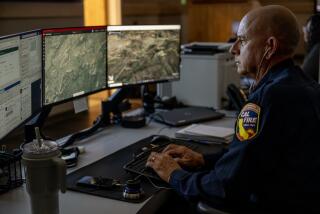AI: NASAâs Curiosity rover can now choose its own laser targets on Mars
Whoâs calling the shots now? After nearly four years on the job, NASAâs Curiosity rover is finally making certain scientific decisions on its own. The Martian explorer now picks some of the rock targets to blast with the laser on its ChemCam instrument.
A software upgrade known as AEGIS allows the rover to make key decisions when Mars is out of sync with Curiosityâs handlers at NASAâs Jet Propulsion Laboratory, delivering more data in less time. Itâs the first time a robot has been able to choose such science targets autonomously on any planetary mission.
âTime on Mars is valuable and we get more data this way and we get the data much faster,â said AEGIS team member Raymond Francis, a scientific applications software engineer at JPL.
This is not AEGISâs first rodeo: The software was also used by NASAâs earlier rover Opportunity for a slightly different purpose (picking which targets to photograph with a narrow-angle camera).
Other types of âartificial intelligenceâ have also been installed on various satellites and rovers for practical purposes. One type lets Curiosity navigate its own way across a rocky, debris-filled landscape rather than having to follow step-by-step directions from the ground. Another type is used by a variety of spacecraft to manage their onboard systems autonomously.
But Curiosityâs new abilities are, in at least one way, unprecedented.
âThis is a new kind of thing in some ways because itâs science autonomy where itâs making decisions actually about science measurements, and not just about navigation or housekeeping,â Francis said.
This is a significant change, because Mars and Earthâs days are often out of sync, and so Curiosity has to wait many hours until the scientists and engineers wake up, read its latest results and then issue instructions. It takes valuable time that Curiosity could be using to do actual science.
The new software also allows the rover to point the laser at really tiny targets that a human handler would have trouble hitting with accuracy from the control room at JPL.
âAEGIS can be used to ensure that you hit that small feature, and that can save you a whole day of trying again,â Francis explained.
But is arming a laser-shooting space robot with artificial intelligence a good idea? Donât worry, Francis said. Although this might qualify as AI, itâs still comparatively rudimentary and extremely limited in scope â itâs very good at identifying rocks based on visual cues, basically.
âThat rover has a maximum speed of a few centimeters per second, and [ChemCamâs laser] has a maximum range of seven meters, and Earth is much farther than that away,â Francis said with a chuckle.
The same kind of artificial intelligence is proving useful on Earth as well as in space, as engineers try to build better rescue robots that can keep working even when communications are down and they canât receive instructions from their human handlers. At the DARPA Robotics Challenge in Southern California last year, many teams programmed their robots to have a certain amount of autonomy for some tasks, because having a robot that can make decisions on its own in an emergency is crucial when time is of the essence.
In some ways, Curiosityâs hardware is beginning to show its age â its wheels, for example, are pocked with holes from some rough rides across the Martian terrain. But even as it gets older, the new AEGIS upgrade shows that the rover can keep growing wiser.
Follow @aminawrite on Twitter for more science news and âlikeâ Los Angeles Times Science & Health on Facebook.
MORE IN SCIENCE
At DARPA challenge, rescue robots show future of disaster relief
Dark matter eludes the worldâs most sensitive detector: Whatâs next?
A hunt for dark matter in a former gold mine







